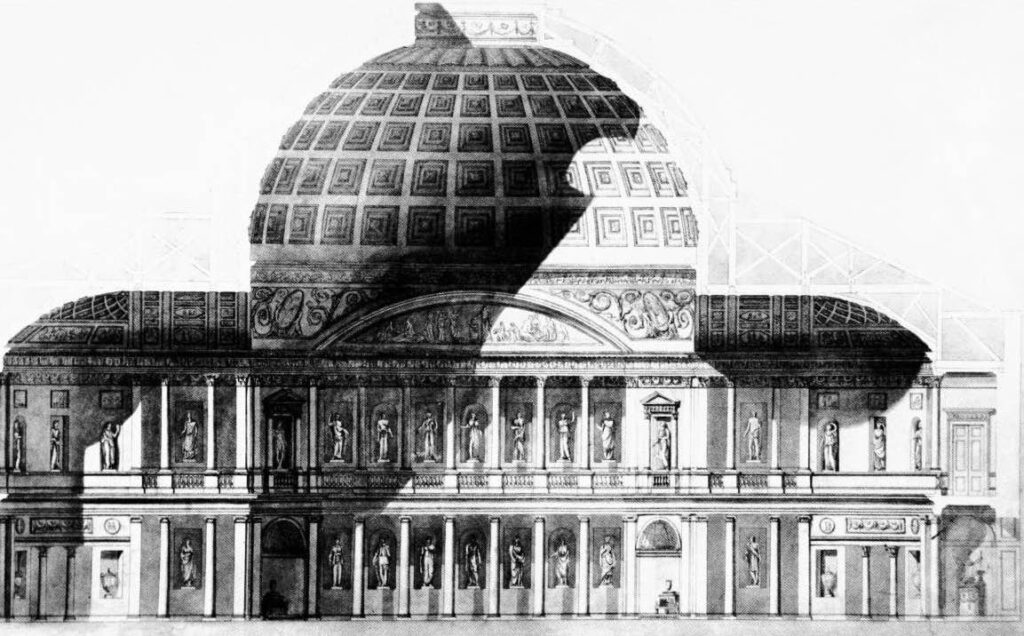
Designed by James Wyatt (who died in 1813 from an overturned carriage) and opened on London’s Oxford Street on 1772, The Pantheon featured a rotunda which was one of the largest rooms in England at the time. Meant to be London’s answer to Ranelagh Gardens for winter entertainment, The Pantheon opened to a crush on January 27th, when nearly “two thousand persons of rank and fashion assembled” .
Built “for the purpose of public evening entertainments” (Ackermann’s 1819) it was admired as a “superb and beautiful structure” with elegant interiors furnished with fine paintings, gilt vases, and statues depicting gods and goddesses. The building consisted of a suite of fourteen rooms, and between 1789-1792 (until a fire) was used as an exhibition space for Italian operas after the destruction by fire of the King’s Theatre in Haymarket.
The fire cooled the once hot spot, known for masquerades, routs and musicales:
The Pantheon officially closed for public entertainments in 1814, after Lord Chamberlain restrictions on the building’s use as a theatre made the final venture unprofitable.
It was converted to a bazaar in 1833, and eventually turned into a winemakers office and showrooms (1867) until being demolished in 1937.









